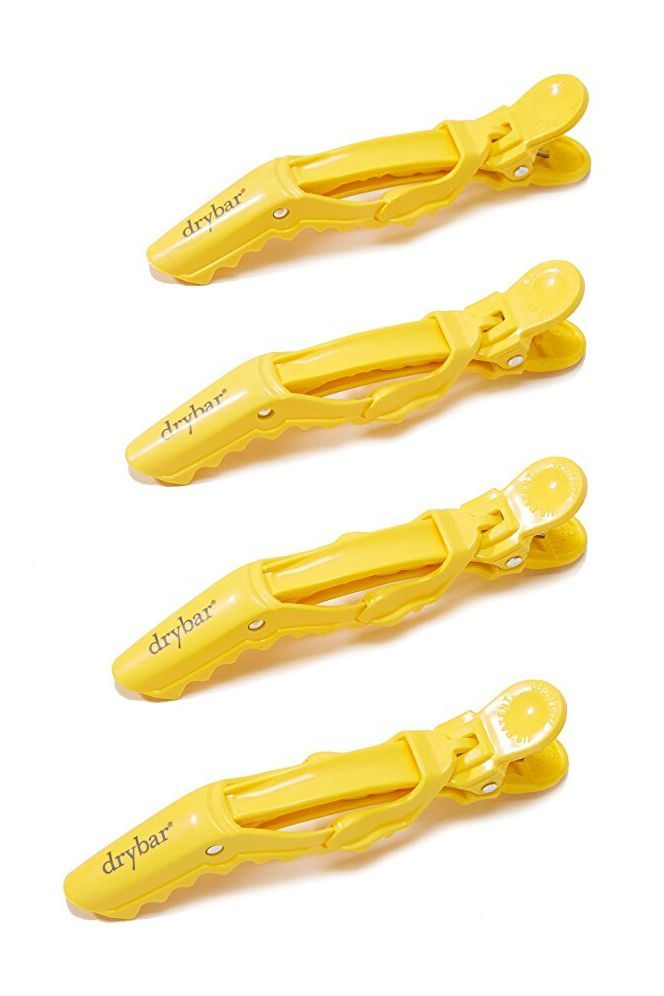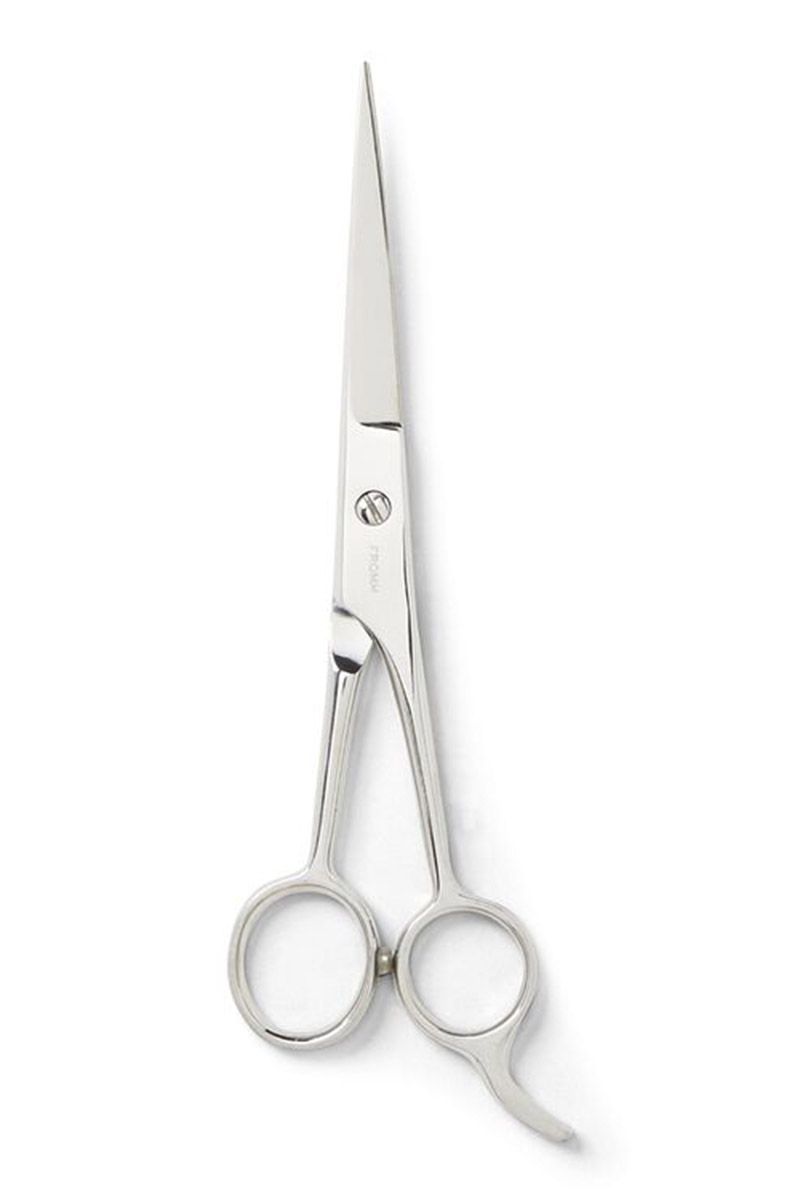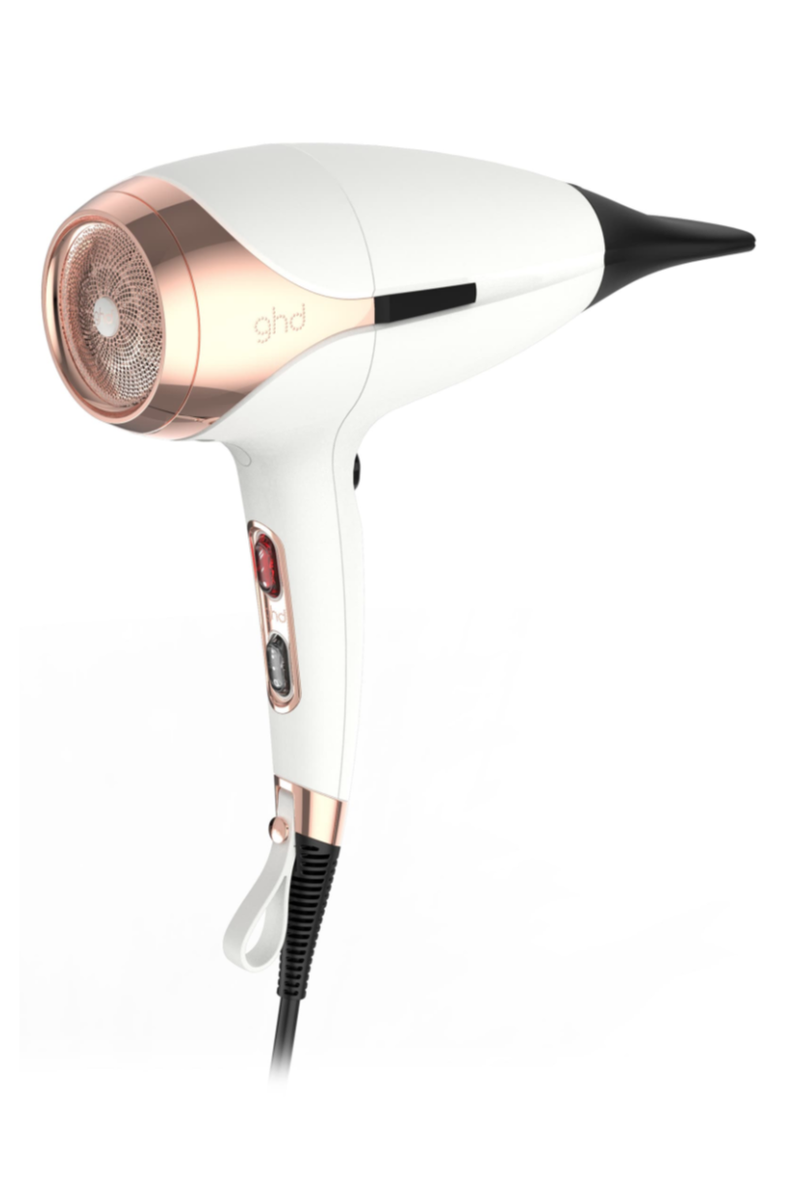How to Cut Your Own Hair, According to Celebrity Stylists
No bowl cuts here, I promise.
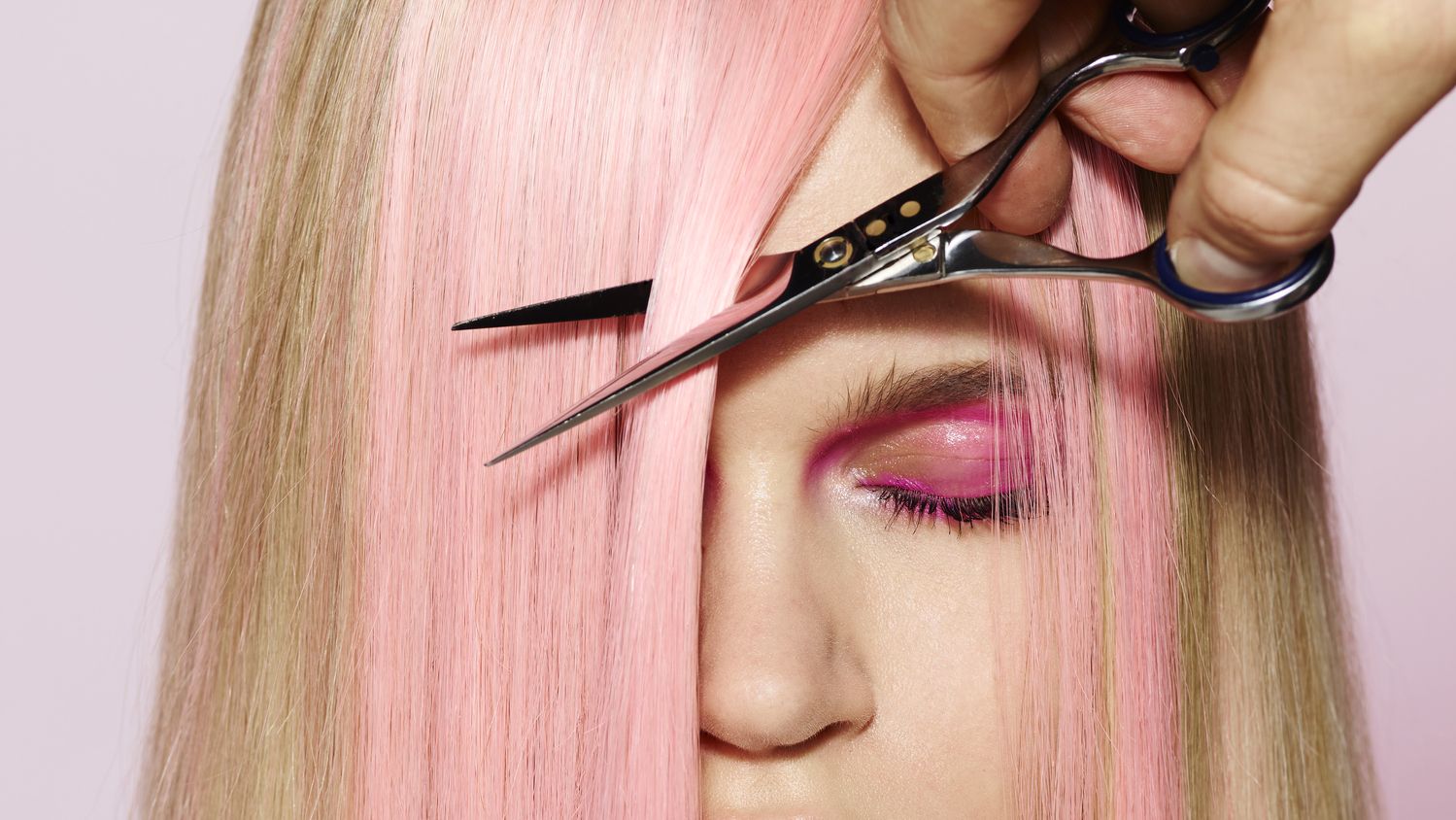

Let me tell you a traumatic hair memory: When I was in kindergarten, I had a playdate with my friend, and like many 6-year-old girls, we decided to cut each other's hair. I went first and she gave me terrible bangs. Then it was my turn to give her hair a trim—and she backed out before I could snip so much as a split end. Trust issues ensued. But if you thought that this experience would teach me to leave hair scissors to the professionals, you are so, so wrong. I've let multiple friends give me different cuts over the years, with various degrees of success.
Patient hairstylists I humbly turn to when my mistakes become obvious have shared insight into what I've done wrong and how to not do it again (Their most common piece of advice: Let a professional do it! Weird.) While I can't endorse giving yourself a major chop at home as an amateur—been there, done that, regretted it—for trims and minor cuts, I've gathered tips and tricks from professional stylists so that your hair can remain refreshed and not botched. From the tools you need, to the techniques you should try, read on to learn how to cut your own hair without making a mess.
Tip #1: Invest In Good Hair Scissors
My lovely friend Sara gave me a pixie cut in her bedroom once upon a time. All things considered, it actually looked good. My mom, unimpressed with my DIY haircut, brought me to a salon so they could shape it up nicely and make it look a little less like the I-Was-Sad-And-Cut-My-Hair style that it was. When the stylist looked it over, he said, "This isn't that bad. But your friend didn't use hair scissors, did she?"
At that point, it seemed to me that a scissor is a scissor, but when cutting hair, the exact tool makes a world of difference. Millie Morales, Garnier's celebrity stylist, shares this important hair-cutting "don't": "Don’t use regular scissors. Hair cutting scissors are extra sharp and allow for additional control, making these very important." Using dull blades means hair ends will appear frayed and unprofessional. Even if the goal is just to trim off a few split ends, using non-hair scissors will exacerbate the look of dry, brittle hair.
Tip #2: Watch YouTube Videos of At-Home Haircuts
YouTube videos are your new best friend if you're about to take scissors to your own head. Morales finds that video tutorials and step-by-step advice from professionals can help you make good snipping decisions. While articles (like this one) and pictures may provide some guidance, you really need to see it happening in motion to get a good feel of what's to come.
Some pieces of advice when selecting which videos to watch: Make sure that if you're planning on truly cutting your hair solo, you don't watch a video where a stylist cuts someone else's hair. Though educational, in terms of understanding the angles, you won't get much information out of it. In the same vein, try to find a video that features a hair model that has your same texture or hair type. If you have straight hair and want to trim off an inch, watching a curly-haired lady give herself a pixie cut won't be all that useful for you.
My favorite hair cutting video, below, features a few of my most-loved things: Alexa Chung being funny and soothing British accents. My future BFF Alexa is not a hair expert and only gives herself a small trim, so this video gives you a realistic expectation of cutting your own hair.
Get exclusive access to fashion and beauty trends, hot-off-the-press celebrity news, and more.
Tip #3: Know When To Cut Dry Hair
While your hairstylist probably gives you a nice shampoo before going in with scissors, since we lack their expertise, cutting dry hair will make sure you know exactly what your cut will look like. Since wet hair looks longer, you might find yourself with a slightly shorter 'do than you were aiming for. While Morales recommends that your hair is clean and fresh, depending on your hair type, a dry cut might be a better option. This is especially true for curly hair, which may look completely different wet than dry and natural.
The second reason why cutting dry is the way to go is this: No matter how careful you are, you will inevitably get hair all over yourself. After cutting, hop in the shower, rinse off the itchy hairs, and style your new hair as you normally would. If you find that you didn't cut enough, rinse and repeat. It's way better than realizing you now have a bob when all you wanted was fresh ends.
Tip #4: Don't Do A Major Chop
Celebrity Stylist Jonathan Wright is giving advice we all need to listen to: Don't give yourself a brand new look at home. For non-stylists, "I recommend just barely clipping the ends; and this way you can’t mess up too bad."
Morales recommends taking it slow and avoiding drastic changes. If, post-chop, you feel like you need a little bit more cut, then raise those hair scissors again. It's much better to realize you haven't cut enough than to look in the mirror and see an unexpected pixie cut.
Tip #5: Take Your Sweet Time
Patience is key for amateur home stylists. While it might seem fun to brush out your hair and clip off major pieces with no forethought, sectioning and going slow will give you the most successful results.
Detangle Your Hair
First things first: You're going to need detangled hair. Morales recommends using a residue-free detangler, like Garnier Fructis Pure Clean Detangle ($5).
Section Your Hair
Using a pin tail comb (a comb with a spike on one end), section your hair into manageable sections. Wright recommends "sectioning your hair into two sides, like right down the middle and pull it down to two sides. Then, comb it even and barely clip the ends."
Start Cutting (Slowly)
If you're just trying to trim off some dead ends, Morales recommends using the tip of your hair scissors for more control and less chance of a major mess-up. If you're trying to only give yourself a light trim, go forth and be your best, most self-sufficient self.
If you want a dramatic change, it might behoove you to wait a little longer until you can go in and see a stylist. And if you really want to mend damaged hair but aren't sure about picking up a pair of scissors, a good hair mask might be worth investing in.
Shop These At-Home Hair Cutting Tools
There are so many reasons why cutting your own hair is a good skill to learn—you'll be saving money and staying safe indoors, among other reasons. But it's important to remember that salon workers and stylists are really suffering due to COVID-19 closures. When it's safe to re-enter your local salons, impress your stylist with your newfound skills and maybe they can teach you an extra thing or two.
For more stories like this, including celebrity news, beauty and fashion advice, savvy political commentary, and fascinating features, sign up for the Marie Claire newsletter.
RELATED STORIES
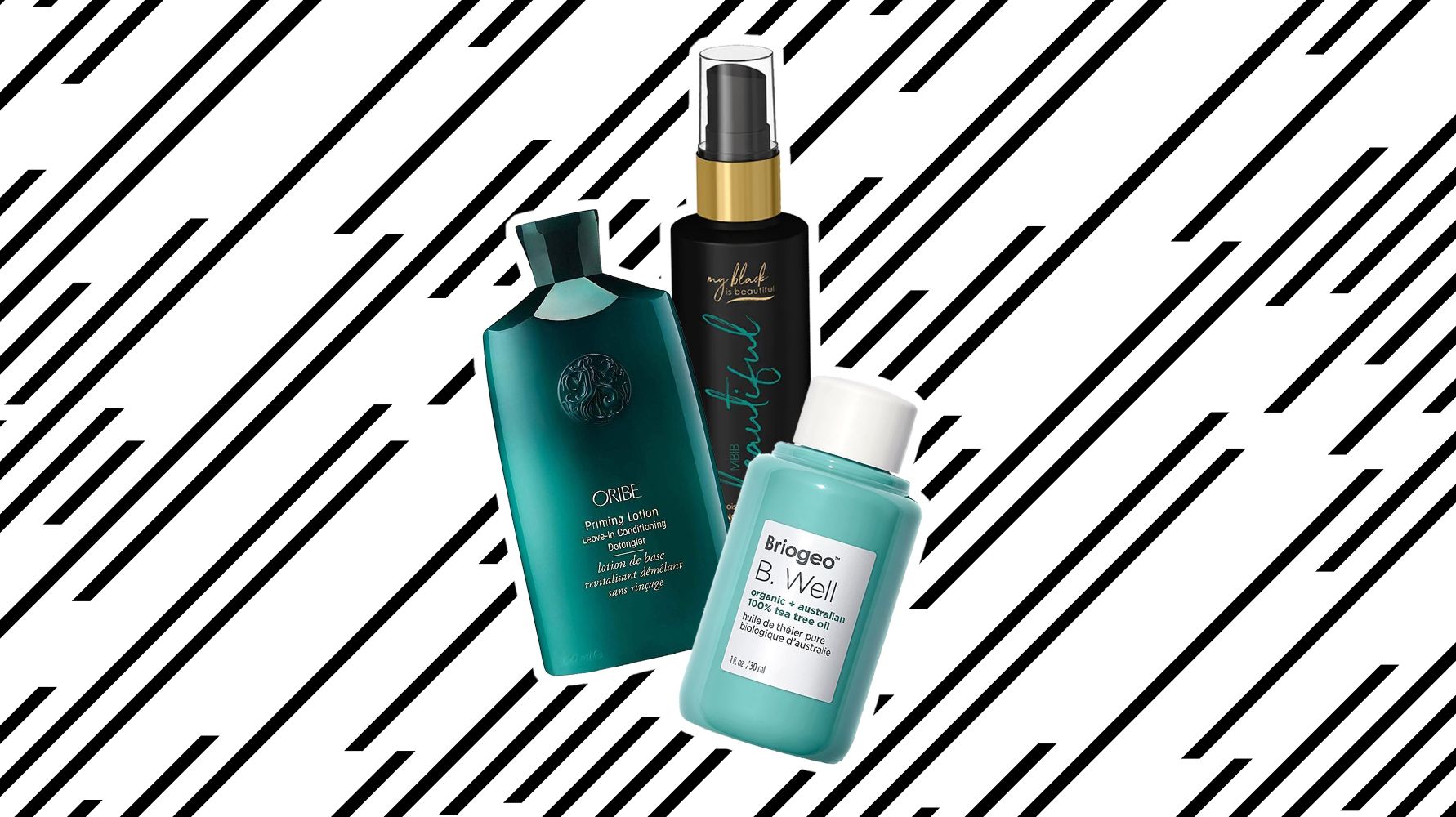

Tatjana Freund is a Beauty Commerce Writer, covering makeup, skincare, and haircare products and trends. She's a fan of vodka tonics and creepy Wikipedia pages.

